Grammar Overview: The Parts of Speech in English
Mastering the basic grammar of the English language involves comprehending the part of speech in sentences. That is why even a beginner in learning English will at least once hear about this term. Despite many complex linguistic definitions, the English part of speech can be simply defined and categorized as in this article, making it quicker and more simple for learners to approach this essential sections of English grammar. Keep on scrolling and staying tuned with us in order to get into the core of the 8 English parts of speech.
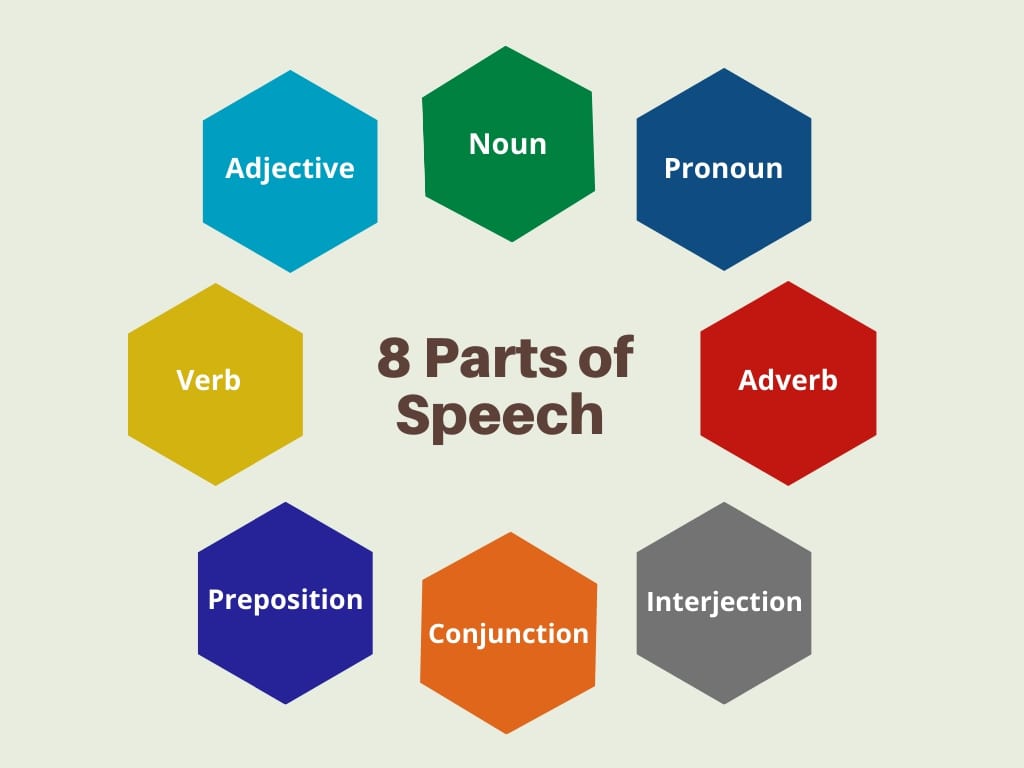
In general English grammar, the part of speech is referred to as other terms such as word class, lexical category or grammatical category. There are 8 common types including noun, pronoun, verb, adjective, adverb, preposition, conjunction, and interjection, some of which belong to either the open or closed classes.
1. Noun
Noun is a part of speech that designates individuals, locations, ideas, or objects. In simpler terms, anything that identifies a “person, thing or place” is noun.
Normally, the two types of nouns are proper nouns and common.
- Common nouns are terms for people, places, or objects. They are therefore not capitalized until they start a phrase or a title.
- Proper nouns are those that refer to specific people, places, or objects.
For example, ‘man’ is a common noun but ‘Thomas’ is a proper one, ‘country’ is a common noun whereas ‘England’ is a proper noun.
Besides, nouns can be categorized according to number, hereby, a noun can be
- Singular or plural
- Countable or uncountable
For example, we refer to a ‘person’ as singular, but when other ‘persons’ are present, we refer to them as the plural form – ‘people’, and these words are also considered as countable nouns for being treated as separated items which can be counted. In contrast, uncountable nouns that can not be separated or counted such as ‘water, information, money’, etc.
Based on physical existence, nouns can be concrete or abstract.
- Concrete nouns are tangible objects that are observable, tactile, audible, etc.
- Abstract nouns are invisible concepts that are not sense-perceivable.
For example, ‘a friend’ is a concrete noun since it can be touched, whereas ‘friendship‘ is an abstract term since it cannot be touched.
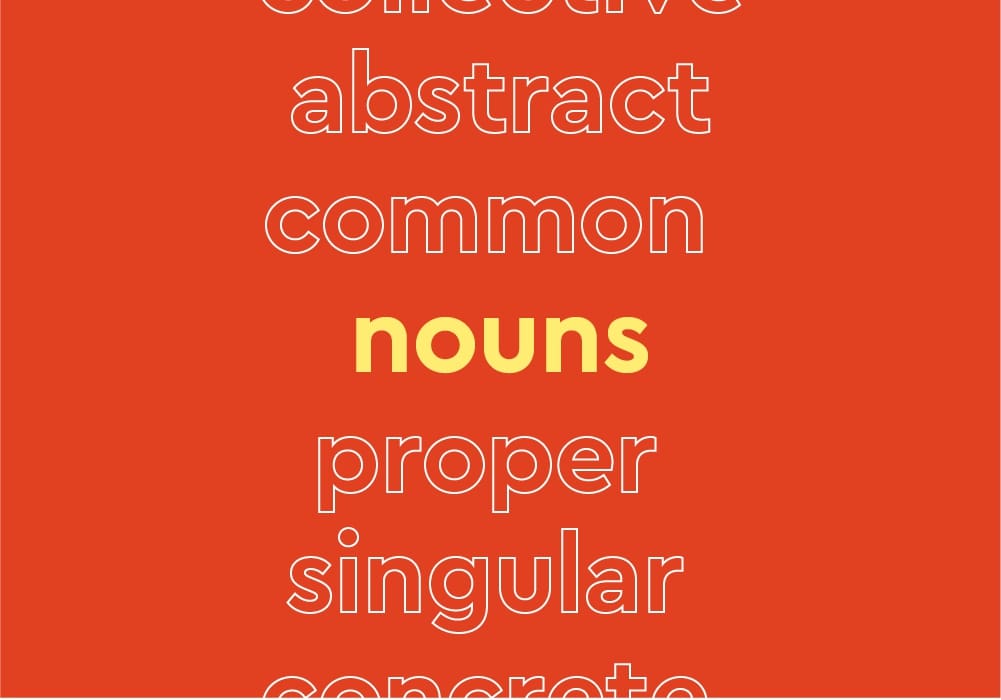
2. Pronoun
A pronoun usually replaces a specific noun, which is known as its antecedent to avoid repetition. That is to say, when the specific noun is already discussed and understood by the audience, pronouns can be used to rename nouns and can refer to almost all kinds of nouns such as person, animal, place, thing, or idea.
In fact, pronouns have many more purposes than only preventing repetition. They not only clarify the context and the meaning of phrases but also influence the way we view other people and objects. That is also the reason why this part of speech is divided into eight types including:
- Personal pronouns: I, you, he, she, it, we, they, me, him, her, us, them
- Possessive pronouns: mine, ours, yours, his, hers, its, theirs
- Reflexive pronouns: myself, yourself, himself, herself, itself, ourselves, yourselves, themselves
- Reciprocal pronouns: ‘each other’ and ‘one another’
- Relative pronouns: who, whom, whose, which, that
- Demonstrative pronouns: this, that, these, those
- Interrogative pronouns: what, which, who, whom, whose
- Indefinite pronouns: all, another, any, anybody/anyone, anything, each, everybody/everyone, everything, few, many, nobody, none, one, several, some, somebody/someone
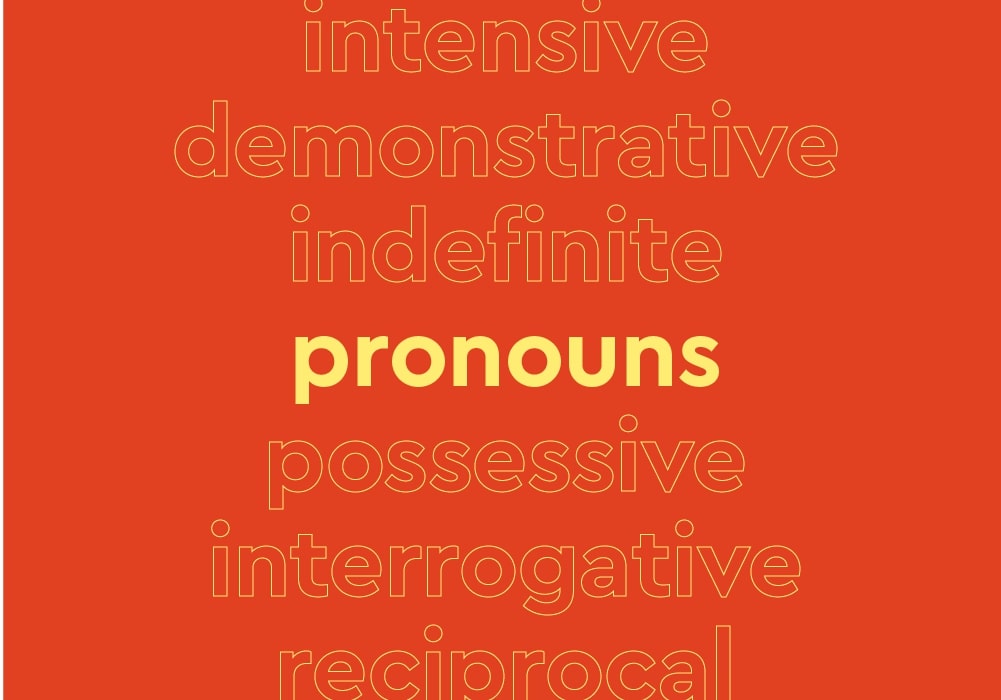
3. Verb
Verbs, along with nouns, adjectives, and adverbs, make up one of the four major word classes. This part of speech is defined as word characterizing actions (what things do) and states of being (how things are).
For example, verbs describing action can be ‘eat, talk, study‘ and other verbs like ‘be, become‘ define the state of being.
Every single sentence must have at least one verb otherwise it would be considered as an unfinished one or a sentence fragment. For the importance of this part of speech, there are several categories to classify them.
- Dynamic or action verbs
- Stative or state-of-being verbs
- Transitive verbs
- Intransitive verbs
- Linking verbs
- Helping or auxiliary verbs
- Modal verbs
- Regular verbs
- Irregular verbs
- Phrasal verbs
- Infinitives
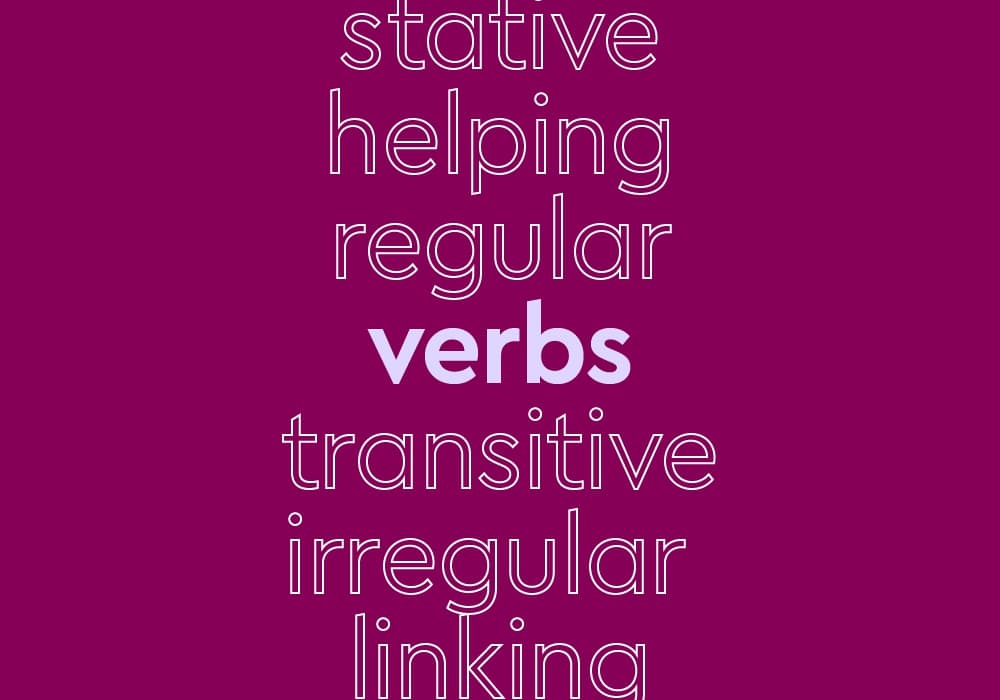
4. Adjective
Adjectives are sometimes referred to as “describing words” because they modify features and qualities of nouns or pronouns, such as what an object looks like (‘the beautiful girl’), how many there are (‘the two cars’), or which particular one it is (‘the last month’). Only nouns are modified by adjectives; verbs and other adjectives are not.
There are typically 13 types of adjectives including:
- Comparative adjectives
- Superlative adjectives
- Predicate adjectives
- Compound adjectives
- Possessive adjectives
- Demonstrative adjectives
- Proper adjectives
- Participial adjectives
- Limiting adjectives
- Descriptive adjectives
- Interrogative adjectives
- Attributive adjectives
- Distributive adjectives
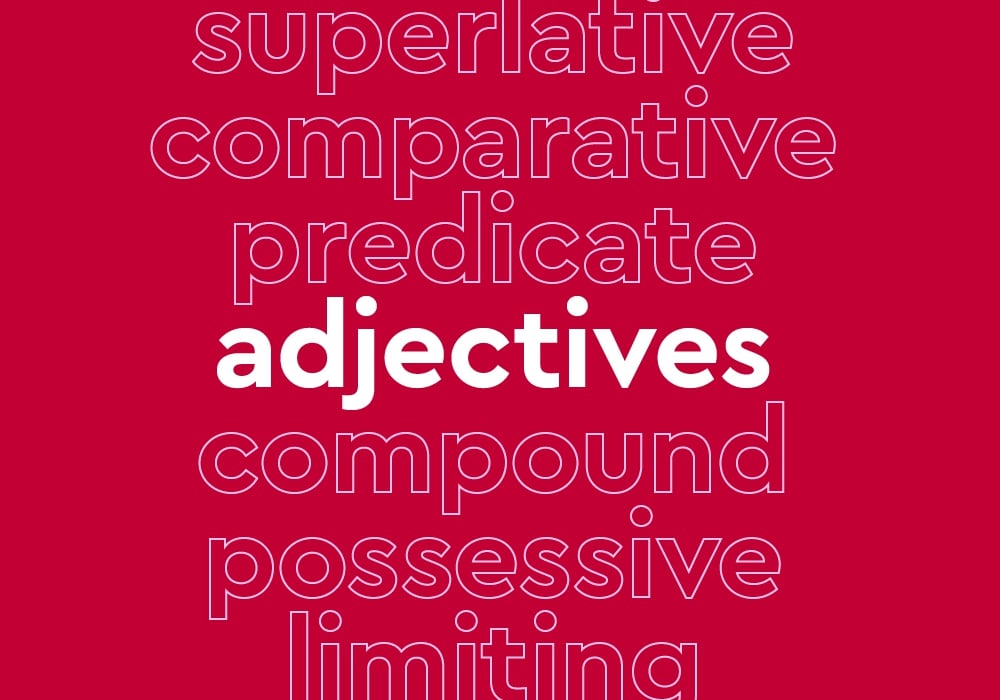
5. Adverb
Adverbs add more information in the a sentence by modifying:
- Verb: He ran quickly
- Adjective: He is extremely good at running
- Another adverb: The child plays the piano rather well
- Sentence: Surprisingly, the child plays the piano well
The suffix-ly is frequently used to finish adverbs, but some others have the same form as adjectives such as ‘fast, early, deep, far, hard’, etc.
English adverbs can be classified into 8 types as listed, some of which may overlap one another:
- Conjunctive adverbs: moreover, however, therefore
- Adverbs of frequency: always, often, never
- Adverbs of time: tomorrow, today, everyday, immediately
- Adverbs of manner: loudly, slowly, happily
- Adverbs of degree: very, rather, too, so
- Adverbs of place: down, everywhere, here, inside
- Interrogative adverbs: how, why, where, when
- Relative adverbs: how, why, where, when
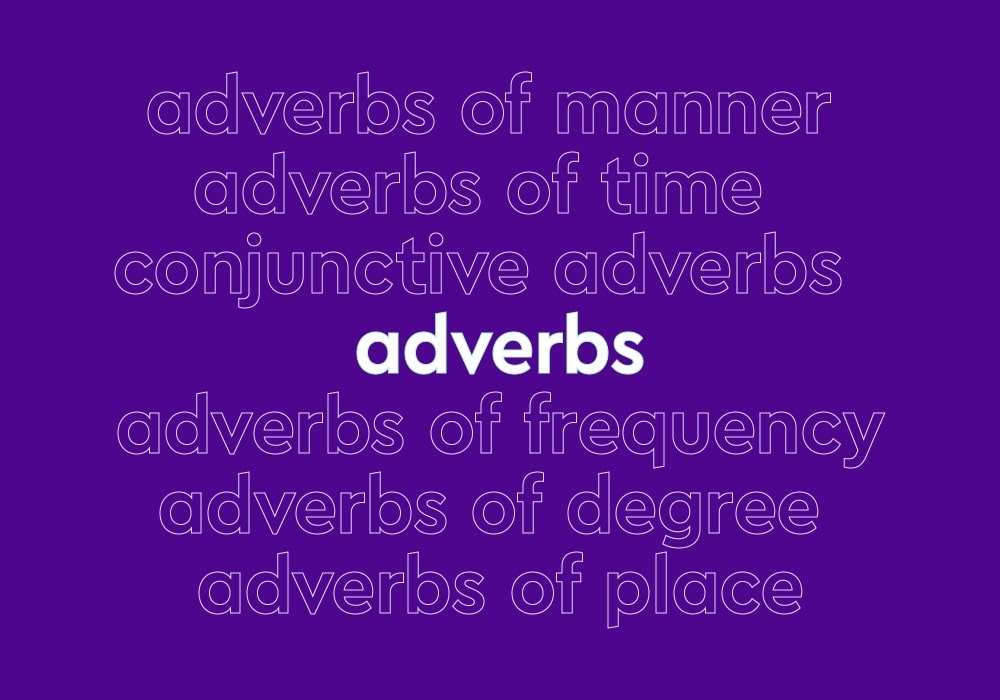
6. Preposition
Preposition is part of speech in form of short word indicating the relationship that nouns, pronouns, or phrases have with other elements within the sentences. This kind of part of speech tends to appear after a noun or pronoun in the latter portion of a sentence and is frequently used to demonstrate a relationship in time or space or a logical relationship between two or more individuals, locations, or objects.
Although there are over 100 single-word prepositions (such as ‘among, before, beneath’, etc.), prepositions in forms of pairs or group words (such as ‘because of, in spite of, in addition to’, etc.) can function as a single one.
The common types of prepositions are:
- Prepositions of manner: with, by, like
- Prepositions of source: by, from
- Prepositions of time: on, at, during
- Prepositions of place: at, by, in, on
- Prepositions of movement: toward, to, by
- Prepositions of possession: of, with, to
- Agent of instrument: with, by
- Prepositions of measure: by, of
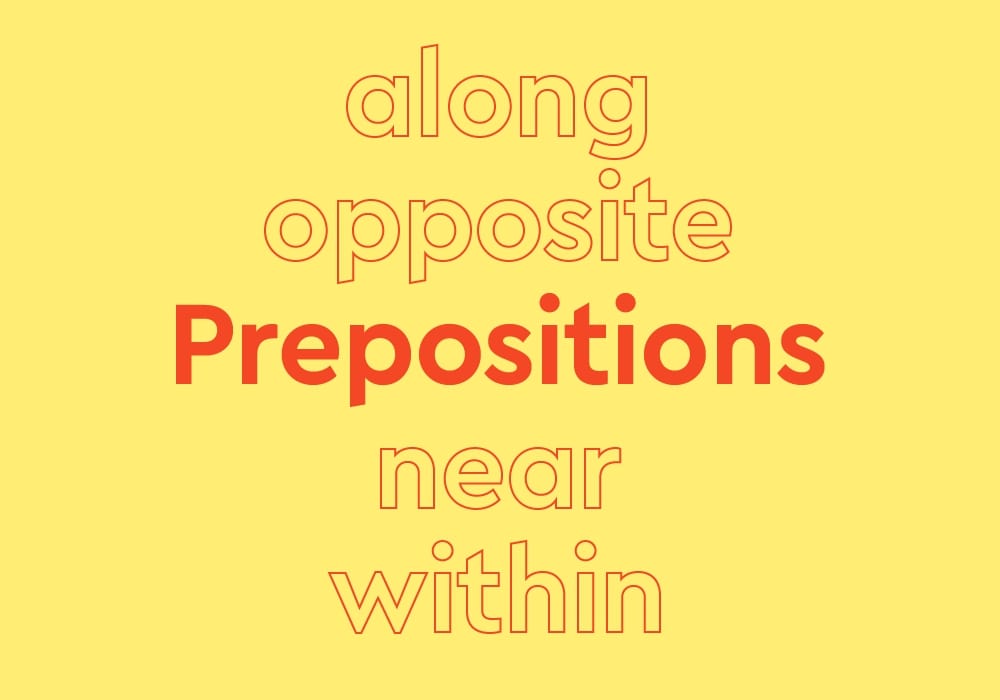
7. Conjunction
A conjunction is a term that links clauses, phrases, and words. English contains a wide variety of conjunctions, but some most frequently used are ‘and, or, but, because, for, if, and when’.
Conjunctions not only help to avoid the choppy nature of several short sentences but also contribute to creating sophisticated and elegant ones. It is advisable to use the parallel structure with elements united by conjunctions.
This kind of part of speech can be classified into three categories:
- Coordinating conjunction: positioned between equal-ranking words, phrases, clauses, or sentences, such as ‘and, but, or’.
- Correlative conjunctions: always appear in pairs to show the relationship between two words or phrases in a sentence, such as ‘both…and, not only…but also’.
- Subordinating conjunction: is a word or phrase that connects an independent clause to a dependent clause, denoting a change in time and location between the two sentences or a cause-and-effect link. For example, ‘although’ and ‘because’ are subordinating conjunctions.
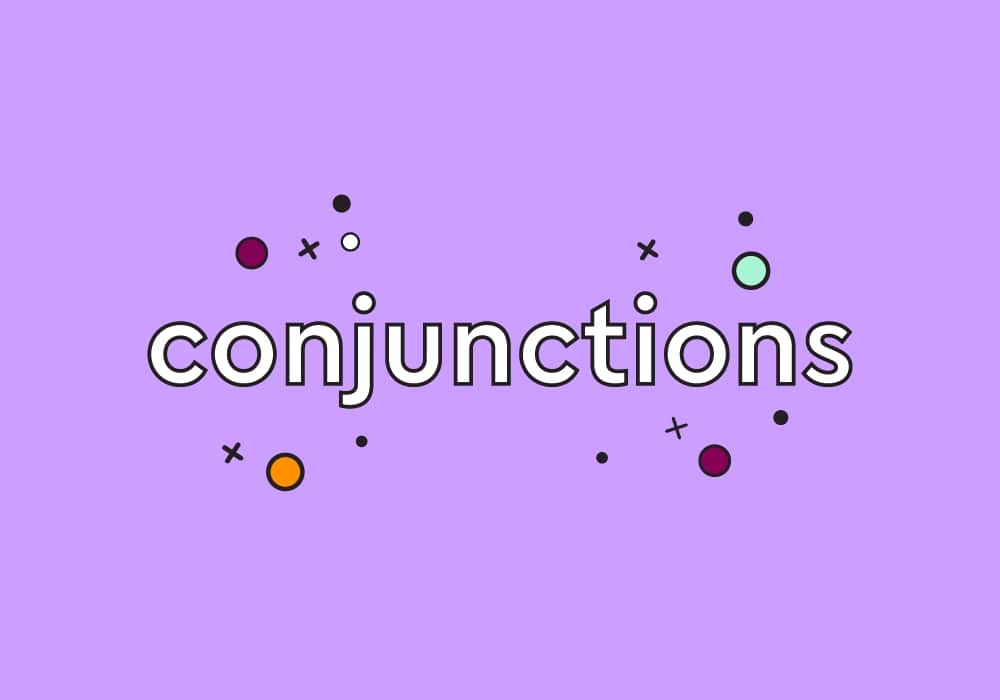
8. Interjection
The final part of speech in the list is interjection – a word or phrase primarily expressing feeling, marking demands or emphasizing emotions rather than carrying any content or meaning. Therefore, this kind of part of speech is grammatically separate from other words in the sentence and is often followed by an exclamation point.
Based on word structure, interjections can be divided into 2 types including:
- Primary interjections are short and exclamatory words and sounds that do not have any other meanings: Huh? Ugh!
- Secondary interjections are words or phrases that began as extensions of other words from different part of speech: Oh my God! Heavens!
Based on purposes of use, there are 3 main interjections including:
- Volitive interjections: indicate a command or request: Oh!… Wow!… Ouch!
- Emotive interjections: show a reaction or to convey a feeling: Bravo! Congratulations! Hurrah!
- Cognitive interjections: illustrate an idea or show a way of thinking: Hmm…, Seriously?

Conclusion
An individual word can play more different roles than one part of speech when used in different circumstances. Therefore it is very important to understand thoroughly about the 8 parts of speech in English so as to be able to grasp English grammar from the very essence of words and basics. Estudyme can help you to boost up that process with a plentiful resource of straightforward and understandable grammar explanations to assist you in reviewing and practicing various grammar concepts, including the 8 above parts of speech. Get started with the English test right now!